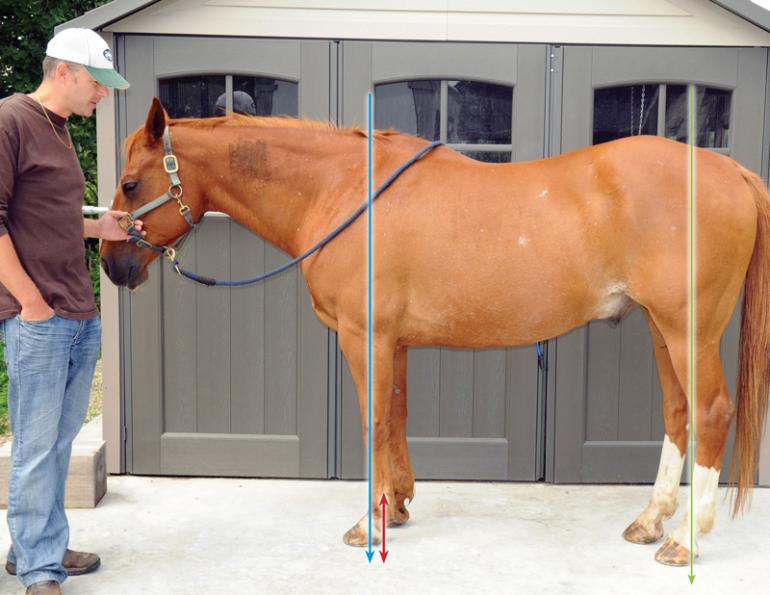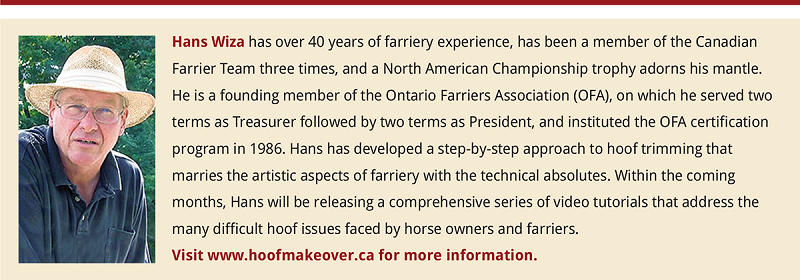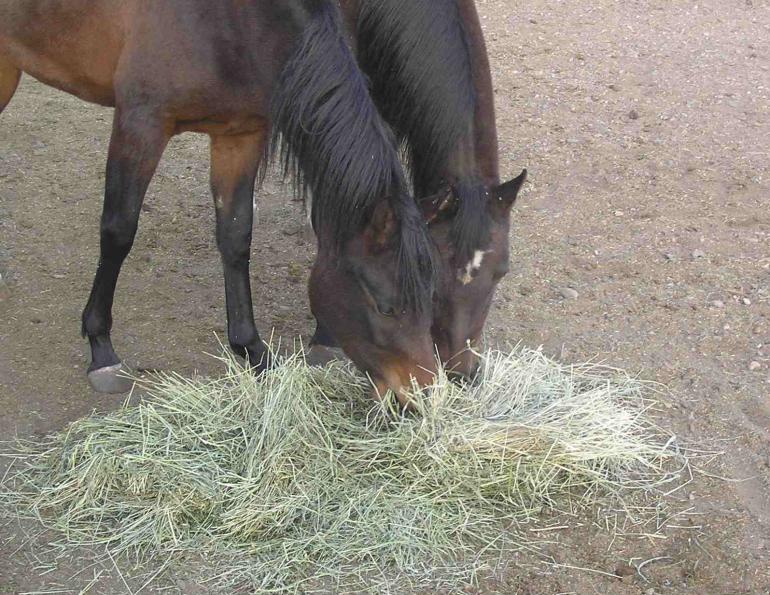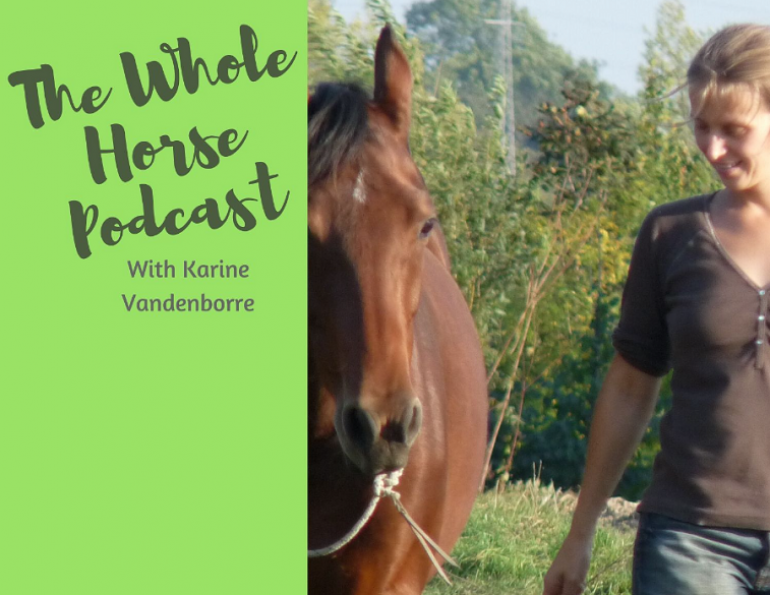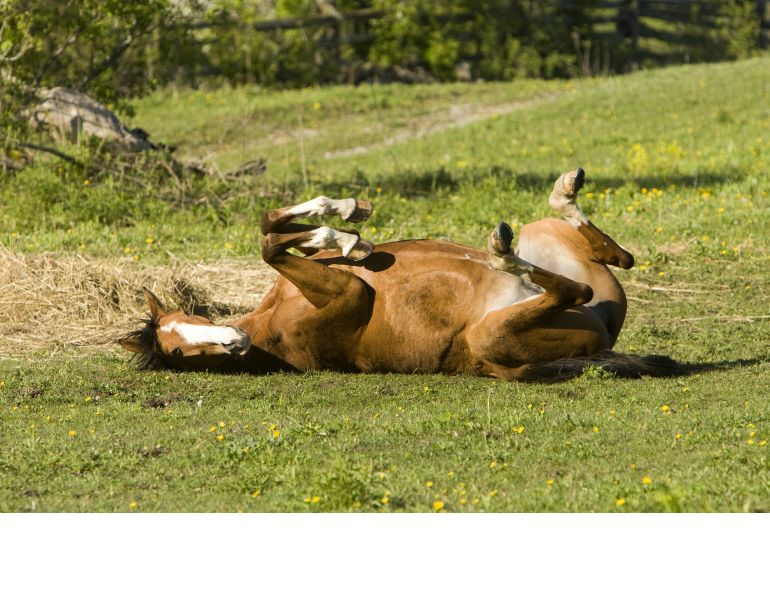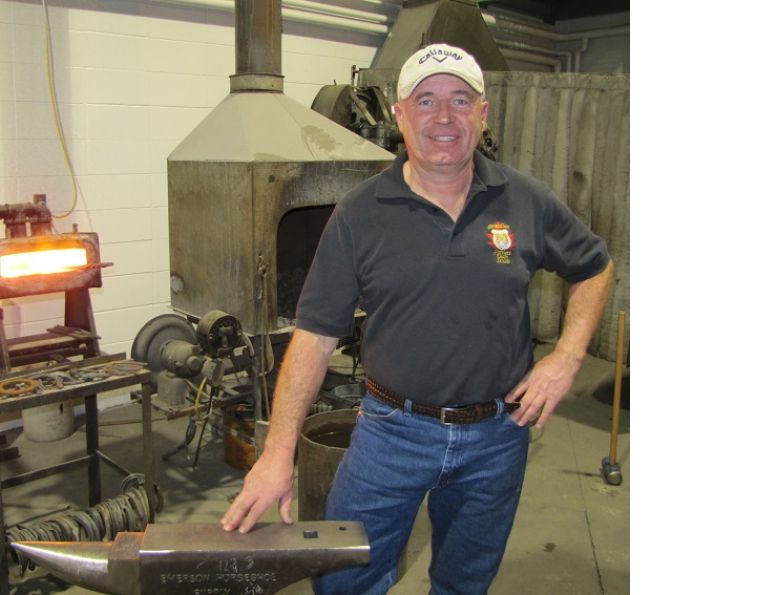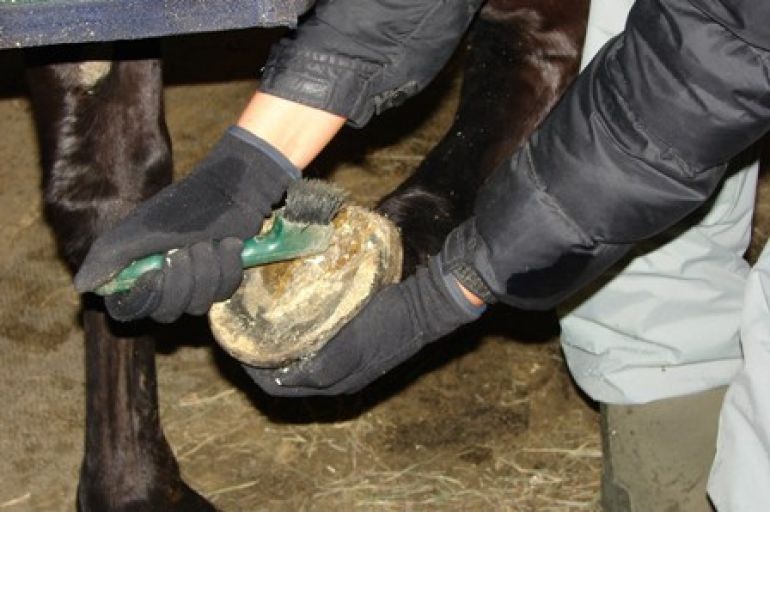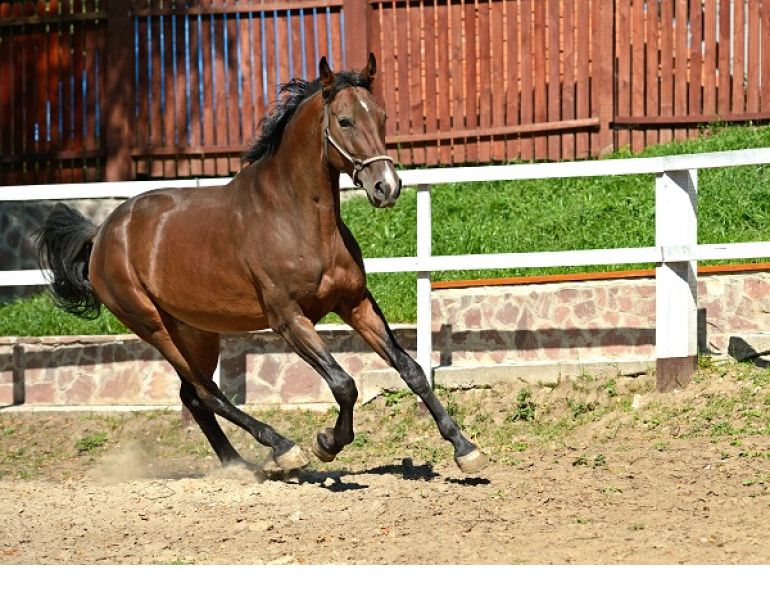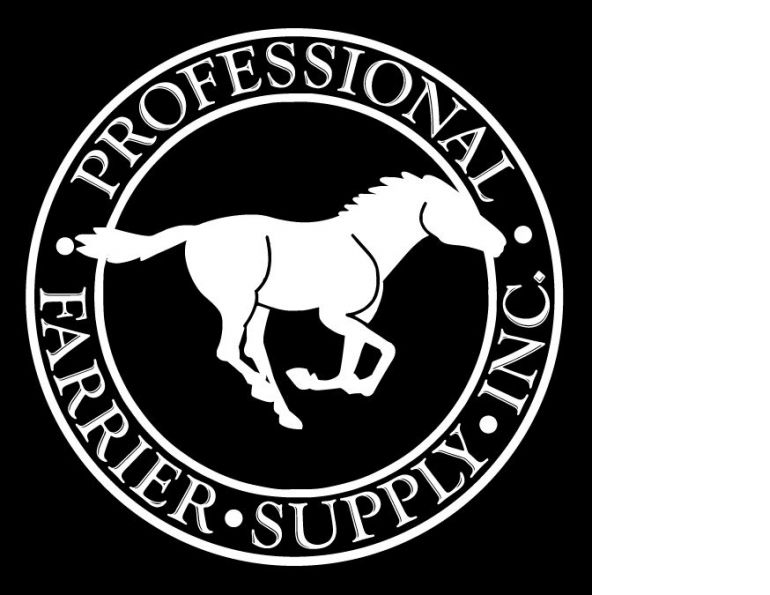By Hans Wiza
“How do I know when my horse’s feet need to be trimmed?” This question has been posed to everyone who trims the feet of horses. As a service provider, I can attest that there are a number of answers to that question – and all of them are correct.
On average, the hoof grows at about 5 to 10 millimetres every four weeks. Growth tends to slow in winter as the days get shorter, to an average growth about 1 mm a week. Shoes that are on tight might last 12 or 14 weeks in winter. With additional daylight, weekly growth accelerates to about 2.5 mm.
In southern Ontario where my practice is located, hooves will grow as much as 40 percent faster from early May through to September. These growth spurts catch a lot of people unaware and unprepared. Hooves can swell and often explode with disastrous results. If your horse’s feet are a mess at the beginning of the season, you’ll be on damage control right from the start, with the added worry that his feet will come apart just as you’re headed to the championships at the end of the season.
Obvious signs that the hooves need care are loose or lost shoes. More subtle indications of foot-related problems are often seen as training or behavioural issues, and may include reluctance to pick up or maintain a gait, lack of smooth transitions, tendency to hollow the back or neck, a saddle that start sliding backward, or a horse that coughs when first moving out.
The hoof care management schedule will vary for reasons which are better understood by looking at individual circumstances and the horse’s specific needs. In general, the hoof care schedule is typically determined by the barn owner or manager, or the farrier, or the horse.

The space between the blue and red lines indicates the cannon bone. The bulbs of the heels have dropped and the heels are shot forward and underrun. The green line indicates that the hoof joint is well ahead of the front of the cannon bone. Photo courtesy of Hans Wiza
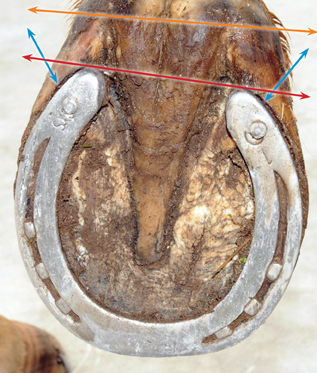
To start, let us look at the school horse or horses at an entry level boarding/show barn. These horses routinely go seven weeks, and the school horses might go eight or nine weeks between visits with the farrier. For some of the hardier-footed horses, especially the barefoot ones, the eight or nine week interval might be fine. But thoroughbreds with shoes, usually just in front, struggle to make six weeks before their feet begin to deteriorate.
These horses are ridden often, especially in summer, causing many of them to have no more than a tiny bit of foot to spare. They get by in a big fluffy arena with deep footing. Ridden with hollow backs and having their faces jerked constantly by a beginner, they are forced to move mechanically, going round and round with no one concerned about how they move as long as they pack their rider around in a safe fashion. The nuances and subtleties of controlled, collected riding are not on the radar here. There is no discussion about suppleness, roundness, or throughness. There is very little understanding of the role of the hoof in overall horsemanship other than quoting the familiar mantra, “no hoof, no horse.”
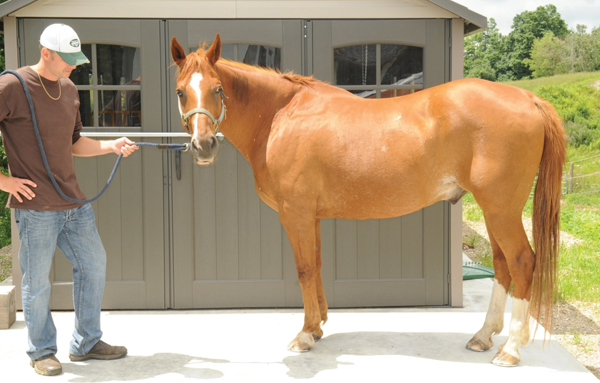

If the horseshoe is missing, or if the horse is limping, the rider might not be able to ride. But there needs to be an awareness of all the other signs that indicate when a horse needs hoof care.
Seven weeks is a time frame that allows people to budget for their next farrier visit at the barest minimum of acceptable maintenance. This keeps the barn owner happy, and satisfies new owners who are just being introduced to the costs of equine maintenance.
The farrier schedules hoof care
The farrier has been given free rein to make the decisions about how best to look after the hoof care of horse or herd, taking into account the huge number of variables that are part of this equation. He must consider the primary function of the horses involved and how to allow for the changing dynamic of the seasons and individual usage patterns.
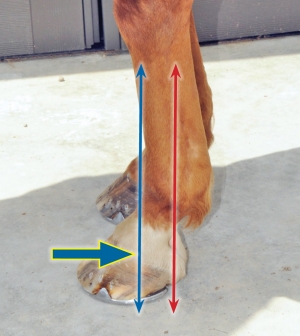
The blue line indicates how the hoof joint (see arrow) is now in line with the front of the cannon bone. Most importantly, the space between blue and red lines indicates the cannon bone, which is now entirely over top of the hoof and digital cushion. Photo courtesy of Hans Wiza
As an example, consider a broodmare band with 15 mares and an almost equal number of offspring as foals, yearlings, and two- and three-year-olds. That’s almost 70 horses. Sales aren’t as brisk as they could be, so the budget must be observed. A good schedule of around seven to nine weeks works well here.
Occasionally the horses might go longer between farrier visits in winter, especially if they are out on a lot of ice and hard packed snow. They’ll typically build sole callous and get flat across the front from pawing in the snow for grass. This type of pawing can be identified by the straight line across the toe becoming angled more towards the heel on the inside. The inside toe is short and there is a prominent point on the outside toe. This results from swiping the snow out and away when foraging. These feet often look very short at the toe because they are; however, they become long and elongated at the heels and quarters. Feet like this are prone to hourglass flares and the result is often a split wall in the quarters with the heels run well forward. In order to protect a large investment in saleable young stock with good hooves, a fairly tight trimming schedule of every two months is a reasonable practice both from a herd management standpoint as well as from a fiscal one.
The farrier’s schedule may often reflect recent weather conditions. For example, after a relatively dry spell of just a few weeks, a couple of centimeters of rain will quickly rehydrate dry hooves. They immediately swell from the added moisture and all the small cracks, chips, flakes, and flaws in the hoof become very flexible and susceptible to tearing and chipping. As an analogy, think about your own nails. When they are freshly trimmed and quite short, fingernails are extremely resistant to bending, peeling, chipping, and tearing. In fact, a short, strong fingernail can withstand enough torque that it could be used as a screwdriver. Let those same fingernails grow for a week or ten days. Soak them in water or clean tack, and they become soft and have limited resistance to torque and wear – now they could never turn a screw without being torn up.
Keep this in mind when you pull your barefooted pony out of a wet pasture or muddy paddock and take her for a ride down the road and up the gravel side road. A couple of hours into this ride and her feet would benefit from a gentle filing to smooth out all the chips and feather the rough edges.
Ultra conservative treatment works best here, but unless a rider is willing and able to file her own horse’s feet it can be cost prohibitive to call a professional at up to $50 per visit, especially when the amount of hoof filings may not exceed a tablespoon per session. Yet this is often all that is required to maintain a good and healthy functioning hoof. At times like this, the owner must decide on the real value of hoof care.
Owners of show horses routinely pay $200 to $300 every five weeks and they operate on a maintenance level as opposed to doing damage control. I call this interval the “critical length” because after this point everything that happens to the hoof tends to be destructive to the integrity and overall strength of the hoof.
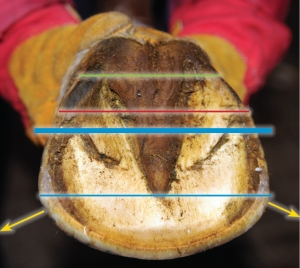
This hoof has grown quite long yet is extremely short at the toe, and the heels are more than twice as long as they should be. The red line denotes the heel length, and the green line shows where the heels should be. Yellow lines show hoof wall pulled away from sole circumference. The thin blue line shows widest part of the hoof, which is in front of the tip of the frog and should be just behind the middle of the hoof as shown by the heavy blue line. Photo courtesy of Hans Wiza

The horse schedules hoof care
Horses that overreach, forge, stumble, or trip should be seen by the farrier, as should horses whose loose shoes clink, clack, and rattle when they walk. Loose horseshoes demand attention regardless of the length of the shoeing interval.
A seasoned veteran farrier anticipates the changes to hoof integrity that different weather conditions will impose. Hooves that were long yet strong on Tuesday are suddenly chipped, flaked, and cracked on Friday because there was rain on Wednesday morning. Hoof horn will swell very rapidly with the addition of moisture. Tightly fitted horseshoes can slip into the hoof wall as it expands and overgrows a shoe seemingly overnight. While it may be desirable to fit horseshoes a bit wider, at times that strategy doesn’t work. High speed work and rough terrain usually demand that horseshoes have virtually no metal protruding from the heels or quarters. Pulling a shoe on a tight mountain switchback could be lethal. Racehorses go down when they hook a heel at high speed.

This is the same hoof from the side. The ground surface of the hoof in front of the blue line is entirely in front of the limb, which is not a supportive position and leaves the stay apparatus to carry the weight bearing burden. This places the weight bearing load on the navicular bone, and does not utilize the weight bearing capacity of the coffin bone and frog/digital cushion. The red line shows excessive toe wear. This often confuses people into thinking that the horse does not need trimming because his toes are still short. This horse will stumble because of a lack of support and the fact that there is no purchase at the toe, which will cause the hoof to cup out or slide backward before the horse’s weight has had a chance to pass over the hoof. The longest part of the hoof ought to be at the centre of the toe (green line) rather than at the sides (red line). Photo courtesy of Hans Wiza
Dry, shod hooves initially have a very high friction coefficient occurring between the horseshoe nail and the hoof. It is friction that secures horseshoe nails in a hoof, not the clinches. Once the hoof becomes rehydrated, that friction coefficient diminishes as the hoof horn becomes wetter and lubricates the blade of the horseshoe nail. We put oil in our car engine to reduce friction. In a car engine friction is the enemy; slippery is better. Too much friction and the pistons no longer go up and down.
But in a horse’s hoof, slippery is not better – horseshoe nails should not go up and down in a hoof wall. Anyone who has oiled their horse’s feet before each round at a horse show can tell you that shoes become increasingly looser by the seventh or eighth trip into the ring. That dry hoof has become so lubricated by hoof oil seeping around the nails that friction is now virtually nil. The result is a Monday morning panic call to the farrier.
Hot summer days and cool nighttime dew will, like rain, predispose hooves to moisturizing. By day hooves dry out and shrink; by night they re-moisturize and swell slightly. Every time they do this, the moist horn cells and fibres swell up against the immobile steel creating a shearing action, and when they are dry they shrink and decrease the friction against the nail. The horse adds to this by stomping at flies all day and the hooves take a serious pounding. Horseshoe nails become wiggly in the holes resulting in a loosened shoe. The farrier may choose to replace an otherwise seemingly good horseshoe just so that the nail holes will be tighter. Simply putting larger nails in the enlarged nail holes predisposes the hoof to even more splitting.
When the hoof wall is dry, the horn cells are very dense, compact, and generally quite hard. A moist hoof wall is less dense, less compact, and generally softer and more vulnerable to tearing, flaking, chipping, and peeling.
By late summer, the horse in typical daily turnout has a hoof wall that has been rehydrated and dehydrated every day, all summer long. This scenario does not apply to show horses or race horses that spend 23 hours a day in their stalls.
When looking at a hoof, the ground surface should be smooth and intact all along its circumference. There should be no jagged pieces sticking out or broken away from the hoof wall. Clinches should be smooth and not sitting up on the outer hoof wall. The toe should be nicely rounded and not flat across the front, which signifies excessive wear due to the fact that the heels are too long and have shot forward on the hoof. Such horses may stumble and trip, which can be very confusing to riders who look at the feet and think that they look short enough.
The horse’s posture changes considerably as its feet grow. It is important that the fetlock joint is still positioned directly above the heel of the hoof and frog. As feet grow the horn fibres at the heel grow forward on the same angle as the heel. Properly trimmed hooves have the heels trimmed back to the widest point of the frog. This allows the horse to put its weight directly over the frog and digital cushion.
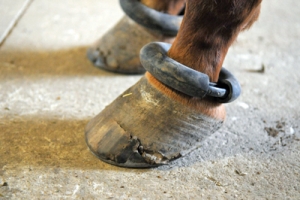
This hoof has gone far too long between farrier visits and has telescoped into itself. The resultant shear took place at the nail line. Note the raised clinches and the hoof overgrowing the heel of shoe.
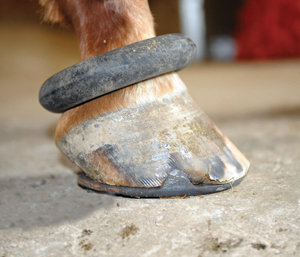
The hoof has been trimmed and dressed to put it back under the fetlock.
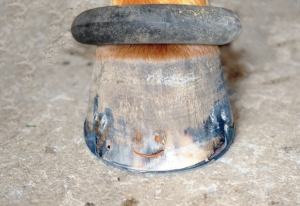
The hoof, now freshly trimmed, is as good as new (please note happy face on the hoof!) Photos Courtesy of Hans Wiza
Horses may become reluctant to pick up or hold a lead if one foot gets too far in front of the fetlock, especially horses with mismatched feet such as those with one narrow upright foot and one flat wide foot.
A show horse has a completely different set of needs from the average recreational horse. He needs to be shod at an interval that maintains peak performance and takes into account the individual horse’s needs and quirks. Some show horse have their feet done every four weeks and they often run on the bare minimum of hoof and sole horn. The hooves might sting for a few days after shoeing and this must be taken into account when making up a shoeing schedule. Horses with very strenuous show schedules often suffer from hooves that are excessively perforated from repeated shoeing on short cycles. It behooves the trainers and grooms to give these horses the opportunity to let their feet grow out as long as possible once in a while, to allow the solid hoof wall to grow down and out.
The investment in regular trimming matched with your horse’s specific needs will go a long way toward preserving your horse’s hoof integrity and providing it with a long, sound life in the show ring or on a backcountry trail.
Main Photo: The entire hoof is in front of the blue line. The blue and red lines are on either side of the cannon bone front to back. The horse is effectively hanging on his stay apparatus. The green line shows how the hoof on the hind limb is in front of the cannon bone, causing the horse to be held up by his stay apparatus. This horse does not look as athletic as he really is. Toes on hind feet are in line with a vertical from the point of the stifle, which will cause the horse to drag his hind feet. Photo courtesy of Hans Wiza
This article was originally published in the August 2014 issue of Canadian Horse Journal.



